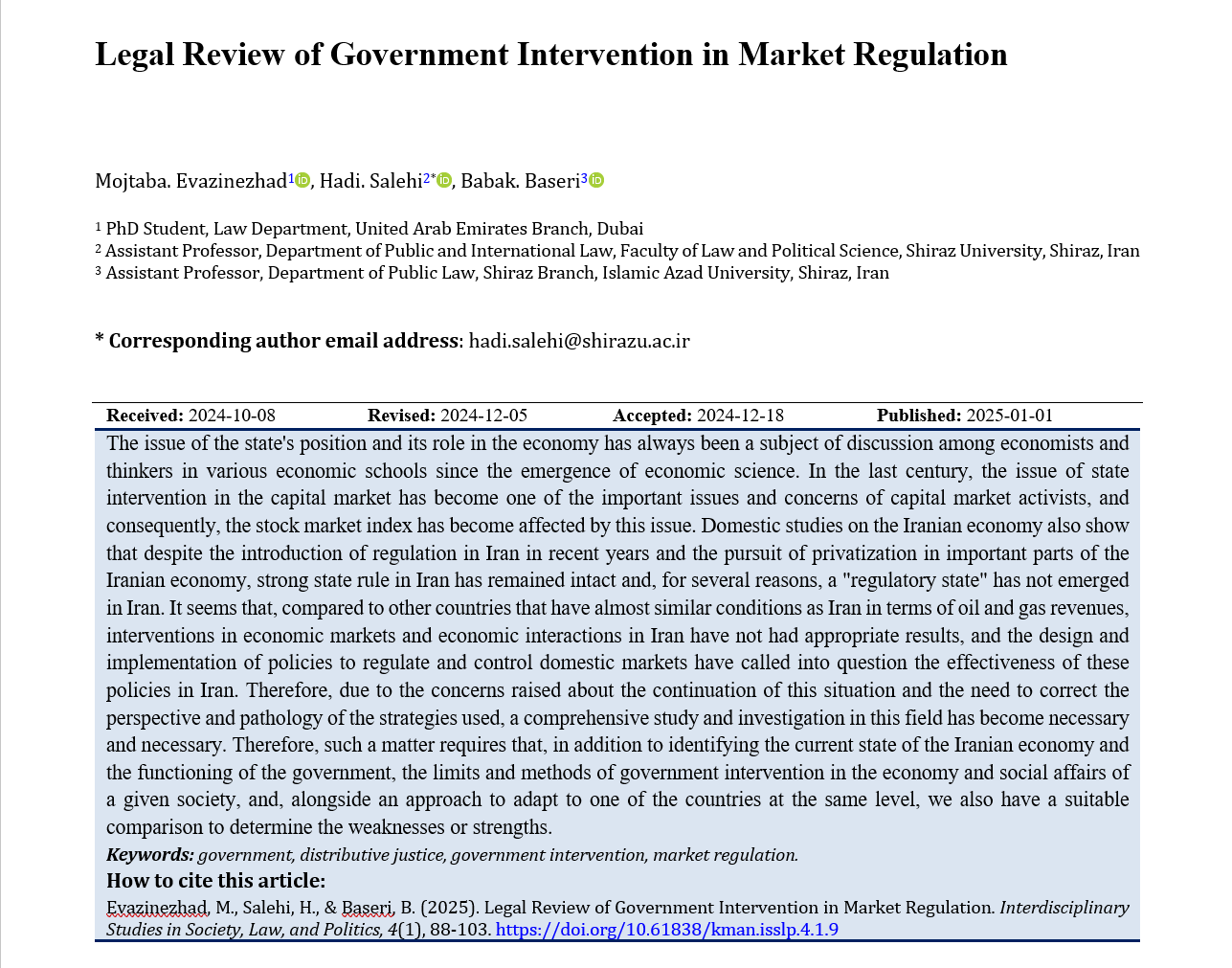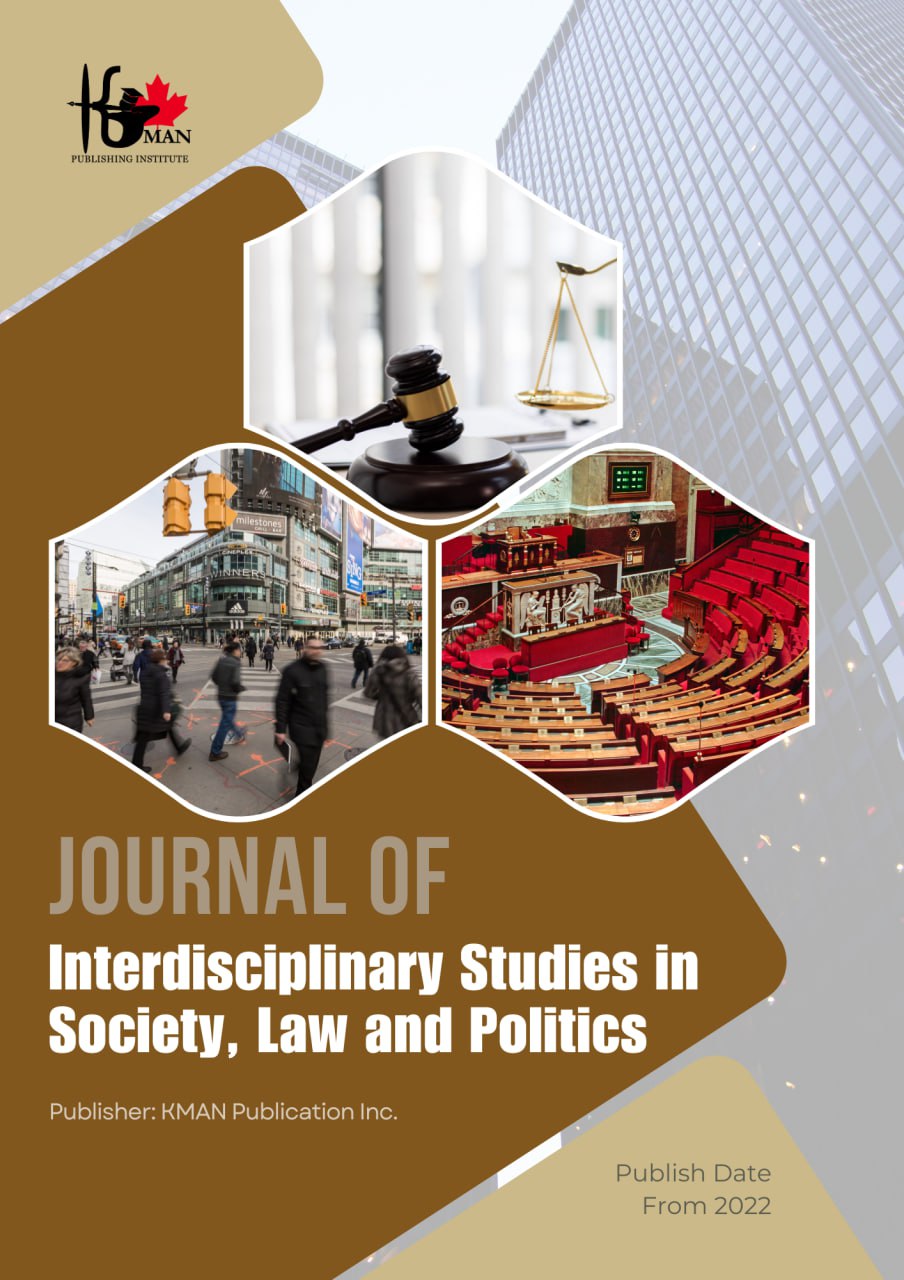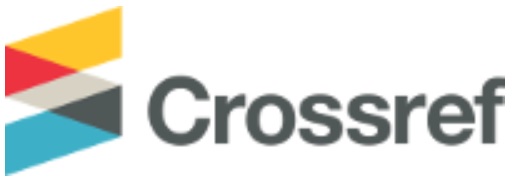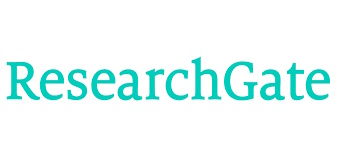Legal Review of Government Intervention in Market Regulation
Keywords:
government, distributive justice, government intervention, market regulationAbstract
The issue of the state's position and its role in the economy has always been a subject of discussion among economists and thinkers in various economic schools since the emergence of economic science. In the last century, the issue of state intervention in the capital market has become one of the important issues and concerns of capital market activists, and consequently, the stock market index has become affected by this issue. Domestic studies on the Iranian economy also show that despite the introduction of regulation in Iran in recent years and the pursuit of privatization in important parts of the Iranian economy, strong state rule in Iran has remained intact and, for several reasons, a "regulatory state" has not emerged in Iran. It seems that, compared to other countries that have almost similar conditions as Iran in terms of oil and gas revenues, interventions in economic markets and economic interactions in Iran have not had appropriate results, and the design and implementation of policies to regulate and control domestic markets have called into question the effectiveness of these policies in Iran. Therefore, due to the concerns raised about the continuation of this situation and the need to correct the perspective and pathology of the strategies used, a comprehensive study and investigation in this field has become necessary and necessary. Therefore, such a matter requires that, in addition to identifying the current state of the Iranian economy and the functioning of the government, the limits and methods of government intervention in the economy and social affairs of a given society, and, alongside an approach to adapt to one of the countries at the same level, we also have a suitable comparison to determine the weaknesses or strengths.
Downloads
References
Ansari, A., Eisaei Tafreshi, M., & Hosseini, S. M. (2013). Analysis of the Legal Structure of Self-Regulatory Organizations in Iran’s Capital Market with a Comparative Study in the U.S. Legal System. Journal of Financial Research(2).
Chapman, R. (2002). The Human Rights Implications of Intellectual Property Protection. Journal of International Economic Law, 5(4). https://doi.org/10.1093/jiel/5.4.861
Chiu, I. H., & Greene, E. F. (2019). The Marriage of Technology, Markets and Sustainable (And) Social Finance: Insights From ICO Markets for a New Regulatory Framework. European Business Organization Law Review, 20(1), 139-169. https://doi.org/10.1007/s40804-019-00138-y
Cole-Heath, A., & Sagiraju, P. (2024). The Effect of Legal Uncertainties on the Pharmaceutical Industry. Interdisciplinary Studies in Society, Law, and Politics, 3(1), 11-17. https://doi.org/10.61838/kman.isslp.3.1.3
Du, Q., Li, Z., Du, M., & Yang, T. (2024). Government venture capital and innovation performance in alternative energy production: The moderating role of environmental regulation and capital market activity. Energy Economics, 129, 107196. https://doi.org/10.1016/j.eneco.2023.107196
Emami, S. H. (1995). Civil Law (Vol. 5). Al-Salamiyah Publishing.
Grimminger, A. (2014). Using Market Incentives to Move Beyond Law and Regulation in Emerging Markets—The Case for Corporate Governance Stock Exchange Indices. 181-208. https://doi.org/10.1142/9789814520386_0007
Katouzian, N. (1995). Civil Law: Non-Contractual Obligations. University of Tehran Publications.
Khan, R. U. (2023). Regulatory Constraints, Responsibilities and Consultation (CRC) for Legal Institutionalization of Cryptocurrencies in Pakistan. Qualitative Research in Financial Markets, 16(4), 680-708. https://doi.org/10.1108/qrfm-03-2023-0053
Renani, M. (2002). Proportionality in Power. Aftab Monthly(19).
Renani, M. (2003). Examination of institutional obstacles to market economy efficiency in Iran's economy (2nd Edition ed.). Management and Planning Organization.
Sarmi Nouri, F., Shojaian, K., & Ostovar Sangari, K. (2022). Legal Challenges of Fines for Building Violations in the Scope of Article 99 Commission (Vol. Year 4).
Savari, Z., Rostami, M. R., Fallah Shams, M., & Jamali, J. (2023). Regulatory quality, rule of law and stock market performance: A system GMM approach. International Journal of Nonlinear Analysis and Applications, 14(6), 211-220. https://ijnaa.semnan.ac.ir/article_6995.html
Sharifi Renani, H., Hajipour, M., & Musharraf Javadi, M. H. (2012). Investigating the Role of Information Technology in Reducing Administrative Corruption Through Increasing Information Transparency, Improving Accountability and Promoting Trust and Integrity: Case Study of Saderat Bank, Isfahan Branches. Scientific Research Quarterly of Iran Research Institute of Science and Information Technology, 28(3). https://doi.org/10.35050/JIPM010.2013.026
Soltani, M. (2021). Capital Market Law. Samt Publications.
Yazdan Panah, M., & Ahmadi Mousavi, S. M. (2023). Legal Supervision Styles for Capital Market Health. Dynamic Management and Business Analysis, 2(3), 196-207. https://doi.org/10.22034/dmbaj.2024.2037208.1063
Zarkalam, S. (2014). E-commerce law. Tehran: Shahr Danesh.

Downloads
Additional Files
Published
Submitted
Revised
Accepted
Issue
Section
License
Copyright (c) 2025 Interdisciplinary Studies in Society, Law, and Politics

This work is licensed under a Creative Commons Attribution-NonCommercial 4.0 International License.





